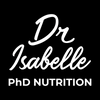3 KEYS TO A SUCCESSFUL RETURN

Collaboration with Boulangerie St-Méthode

The end of August signals the return to school for children and back to work for adults. It’s the perfect time to recharge your batteries before the new term begins. Many of us are starting to structure our days again, preparing packed lunches, or simply settling back into a routine. Little by little, we’re re-establishing a sense of balance in our daily lives and it feels good!
Energy, routine and balance: the three keys to a successful new start!
Nutrition plays a crucial role in maintaining good energy levels day to day, as it’s the fuel our bodies rely on. By getting back into healthy eating habits as early as August, we give ourselves the best chance of a smooth and successful return.
For children, students, and even adults, it’s important to gradually ease back into a regular meal schedule. Not only does this make it easier to plan and prepare nutritious meals, but it also helps keep energy levels stable throughout the day.
As for me, even though I don’t take summer holidays and my TV appearances on Salut Bonjour and radio slots on Qub continue, summer is always a more festive time. Big brunches, late nights, toasted marshmallows by the fire, and shorter night, all paired with days spent surfing, my favourite sport. I’m always happy when autumn arrives, bringing me back to balance. I return to my breakfast toast on quinoa bread (with guacamole and sliced hard-boiled egg), which sustains me perfectly while remaining light, or my traditional slice of toast spread with peanut butter and topped with slices of seasonal apple.
Choose foods with high nutritional density
Nutritious meals provide all the energy and nutrients our bodies need. To build such meals, it’s wise to choose foods with high nutritional density. The nutritional density of a food refers to the ratio of essential micronutrients (vitamins and minerals) to its calorie content. Foods with high nutritional density are valuable allies in meeting our nutritional requirements.
Examples of high nutritional density foods include fruits, vegetables, low-fat dairy products (e.g. milk, yoghurt), whole grains (e.g. bread, oats), pulses (e.g. chickpeas, lentils, kidney beans) and lean proteins (e.g. poultry, fish). On the other hand, cakes, crisps, ice cream desserts, chocolate bars, and fried foods have low nutritional density.
This month, I’m sharing a delicious, spiced squash toast! This recipe, with great nutritional density, is a source of fibre and provides as much protein as two eggs with 13 g. It features one of the new breads launched this year, Gourmet Seeds (made with rye and sunflower). It’s a truly seasonal dish with squash and pumpkin seeds, and gently warming spices like cinnamon and nutmeg. A feast for the taste buds
CLICK HERE TO SEE MY RECIPE
How to plan lunches efficiently?
To avoid morning stress and ensure you have nutritious lunches every day, planning is essential. Here are three tips for planning lunches effectively, depending on how much time you have:
At the weekend, set aside a whole day or half-day to cook several lunches in advance.
The night before, cook extra portions at dinner for the next day’s lunch.
On the morning itself, opt for quick-to-prepare or easy-to-assemble lunches that require little or no cooking. A slice of bread, hard-boiled eggs, raw veggies, cheese, hummus, etc. It doesn’t have to be complicated to be balanced!
Want to know more about the St-Méthode Bakery product line? CLICK HERE











Leave a comment